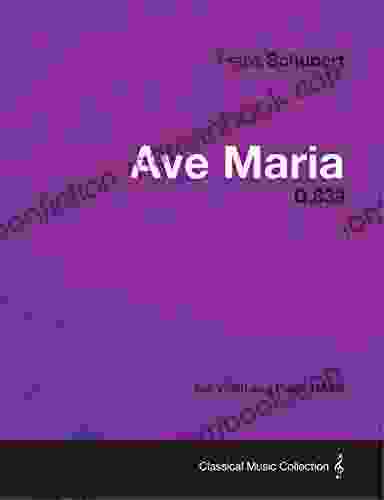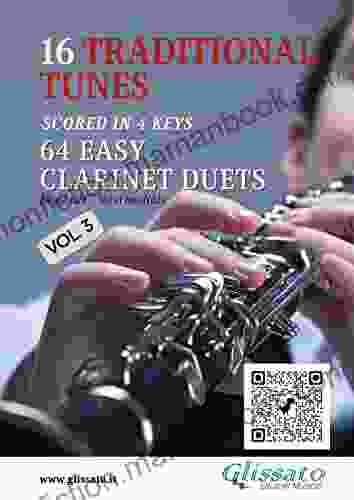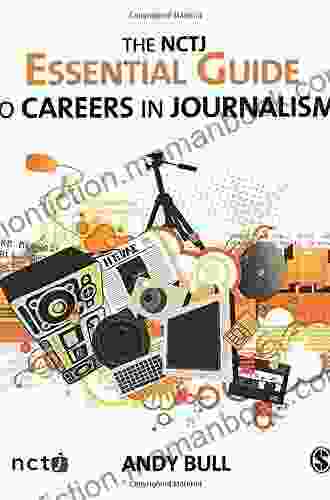Ave Maria 839 for Violin and Piano 1825: Unveiling the Enchanting Symphony of Strings and Keys

In the annals of classical music, few compositions evoke such a profound sense of tranquility and spiritual devotion as Franz Schubert's Ave Maria 839 for violin and piano. Created in 1825, this enchanting masterpiece has transcended the boundaries of time, captivating audiences with its ethereal melodies and poignant harmonies. In this article, we embark on a journey to unravel the captivating story behind Ave Maria 839, exploring its origins, composition, and enduring appeal as a musical treasure.
The Genesis of a Timeless Masterpiece
The genesis of Ave Maria 839 can be traced to the early 1820s when Schubert was residing in Vienna. During this period, he became acquainted with the renowned soprano Anna Milder-Hauptmann, who expressed an interest in performing a new composition for violin and piano. Inspired by Milder-Hauptmann's request, Schubert set about composing a piece that would showcase her exceptional vocal abilities.
4.3 out of 5
| Language | : | English |
| File size | : | 1859 KB |
| Text-to-Speech | : | Enabled |
| Screen Reader | : | Supported |
| Enhanced typesetting | : | Enabled |
| Print length | : | 9 pages |
The initial inspiration for Ave Maria 839 came from a poem by Sir Walter Scott entitled "The Lady of the Lake." Specifically, it was the eighth stanza of the poem that resonated with Schubert, providing the lyrical foundation for his composition. However, it is important to note that Schubert's Ave Maria 839 is not a setting of Scott's poem but rather an independent composition that shares thematic similarities with the literary work.
Composition and Structure
Ave Maria 839 is primarily structured as a ternary form, consisting of an A-B-A1 format. The opening section (A) presents the main melodic theme, characterized by its gentle and flowing nature. The violin and piano intertwine seamlessly, creating a tapestry of sound that draws the listener into a serene and contemplative realm.
The middle section (B) introduces a contrasting theme, which is slightly more agitated and intense. This section provides a moment of tension and drama before the return of the main theme in the A1 section. However, in the A1 section, the melody is adorned with delicate variations, lending it a sense of heightened emotion and spiritual depth.
The simplicity and elegance of Ave Maria 839 belie the technical mastery and compositional genius of Schubert. The seamless interplay between the violin and piano, the subtle shifts in dynamics and phrasing, and the poignant harmonies all contribute to the piece's profound emotional resonance.
Performance and Reception
The premiere of Ave Maria 839 took place in 1825 at the home of Anna Milder-Hauptmann. The performance was a resounding success, with Milder-Hauptmann's exquisite vocals and Schubert's enchanting music captivating the audience. However, the composition did not receive widespread recognition until several decades later. It was not until the late 19th century that Ave Maria 839 began to gain popularity, both as a vocal piece and in its instrumental arrangement for violin and piano.
Today, Ave Maria 839 is one of Schubert's most enduring and frequently performed compositions. It has been recorded by countless violinists and pianists, and its popularity extends far beyond the classical music world. Ave Maria 839 has been featured in films, television shows, and other artistic mediums, cementing its place as a beloved masterpiece that transcends musical genres.
The Enduring Appeal of Ave Maria 839
The enduring appeal of Ave Maria 839 can be attributed to several factors. Firstly, the composition's inherent beauty and emotional depth resonate with listeners of all backgrounds and musical tastes. The combination of the serene melody, poignant harmonies, and skillful craftsmanship creates a timeless work that evokes a sense of peace and tranquility.
Secondly, Ave Maria 839 has a universal spiritual appeal. While the composition was initially inspired by Christian themes, its message of hope, devotion, and love transcends religious boundaries. This universality has allowed Ave Maria 839 to be adopted by people of various faiths and beliefs, making it a truly inclusive musical experience.
Lastly, Ave Maria 839 is highly accessible and adaptable. Its simple yet elegant structure and instrumentation make it suitable for performance by musicians of all levels. Additionally, the composition lends itself well to various arrangements, from solo violin to full orchestra, further increasing its versatility and appeal.
Franz Schubert's Ave Maria 839 for violin and piano stands as a testament to the power of music to transcend time, borders, and cultures. Composed in 1825, this enchanting masterpiece has captivated audiences for generations with its serene melodies, poignant harmonies, and spiritual depth. Through its enduring appeal and adaptability, Ave Maria 839 continues to inspire and uplift listeners around the world, solidifying its place as one of the most cherished musical treasures of all time.
4.3 out of 5
| Language | : | English |
| File size | : | 1859 KB |
| Text-to-Speech | : | Enabled |
| Screen Reader | : | Supported |
| Enhanced typesetting | : | Enabled |
| Print length | : | 9 pages |
Do you want to contribute by writing guest posts on this blog?
Please contact us and send us a resume of previous articles that you have written.
 Top Book
Top Book Novel
Novel Fiction
Fiction Nonfiction
Nonfiction Literature
Literature Paperback
Paperback Hardcover
Hardcover E-book
E-book Audiobook
Audiobook Bestseller
Bestseller Classic
Classic Mystery
Mystery Thriller
Thriller Romance
Romance Fantasy
Fantasy Science Fiction
Science Fiction Biography
Biography Memoir
Memoir Autobiography
Autobiography Poetry
Poetry Drama
Drama Historical Fiction
Historical Fiction Self-help
Self-help Young Adult
Young Adult Childrens Books
Childrens Books Graphic Novel
Graphic Novel Anthology
Anthology Series
Series Encyclopedia
Encyclopedia Reference
Reference Guidebook
Guidebook Textbook
Textbook Workbook
Workbook Journal
Journal Diary
Diary Manuscript
Manuscript Folio
Folio Pulp Fiction
Pulp Fiction Short Stories
Short Stories Fairy Tales
Fairy Tales Fables
Fables Mythology
Mythology Philosophy
Philosophy Religion
Religion Spirituality
Spirituality Essays
Essays Critique
Critique Commentary
Commentary Glossary
Glossary Bibliography
Bibliography Index
Index Table of Contents
Table of Contents Preface
Preface Introduction
Introduction Foreword
Foreword Afterword
Afterword Appendices
Appendices Annotations
Annotations Footnotes
Footnotes Epilogue
Epilogue Prologue
Prologue True Kelley
True Kelley Sez Kristiansen
Sez Kristiansen Jamaica Kincaid
Jamaica Kincaid Jimmy Moncrief
Jimmy Moncrief Ruchi Singh
Ruchi Singh Djemal Ua
Djemal Ua King Arthur Baking Company
King Arthur Baking Company Kristin Kobes Du Mez
Kristin Kobes Du Mez Drew Lindsay
Drew Lindsay Brianna Nichelle
Brianna Nichelle Stanley Plumly
Stanley Plumly Vinicio Sanchez
Vinicio Sanchez Penny Simkin
Penny Simkin Bradley Hope
Bradley Hope Chris Edwards
Chris Edwards Adam Sinicki
Adam Sinicki Michael Bailey
Michael Bailey Rubina Ramesh
Rubina Ramesh C Fred Bergsten
C Fred Bergsten Jennifer A Doudna
Jennifer A Doudna
Light bulbAdvertise smarter! Our strategic ad space ensures maximum exposure. Reserve your spot today!
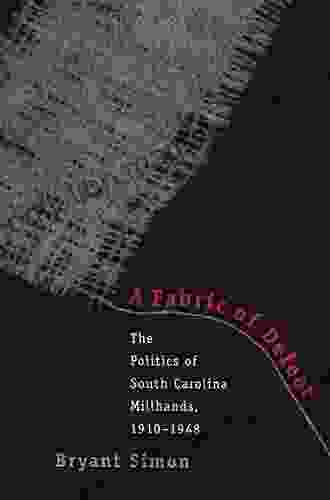
 Thomas HardyUnveiling the Fabric of Defeat: A Comprehensive Exploration of Failure and...
Thomas HardyUnveiling the Fabric of Defeat: A Comprehensive Exploration of Failure and...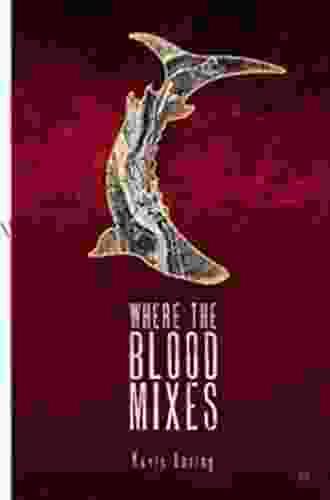
 Anthony BurgessWhere the Blood Mixes: A Literary Exploration of Indigenous and Settler...
Anthony BurgessWhere the Blood Mixes: A Literary Exploration of Indigenous and Settler... Jamie BlairFollow ·12.8k
Jamie BlairFollow ·12.8k Joseph FosterFollow ·2.9k
Joseph FosterFollow ·2.9k Henry HayesFollow ·15k
Henry HayesFollow ·15k Dashawn HayesFollow ·17k
Dashawn HayesFollow ·17k Andrew BellFollow ·12.5k
Andrew BellFollow ·12.5k Pablo NerudaFollow ·16.6k
Pablo NerudaFollow ·16.6k Norman ButlerFollow ·19.8k
Norman ButlerFollow ·19.8k Felix HayesFollow ·12.1k
Felix HayesFollow ·12.1k
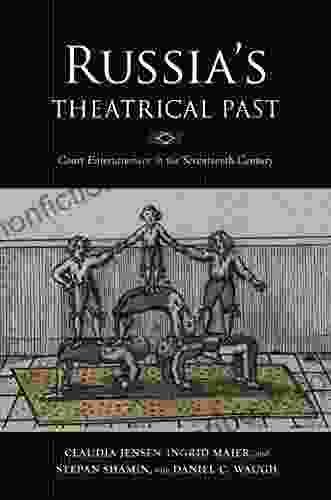
 Steve Carter
Steve CarterUnveiling the Rich Theatrical Tapestry of Russia: A...
Origins and Early...

 Frank Butler
Frank ButlerOn Talking Terms With Dogs: Calming Signals and the...
For centuries, dogs have...

 Leo Tolstoy
Leo TolstoyThe Inside Guide to Applying and Succeeding in...
Applying to...
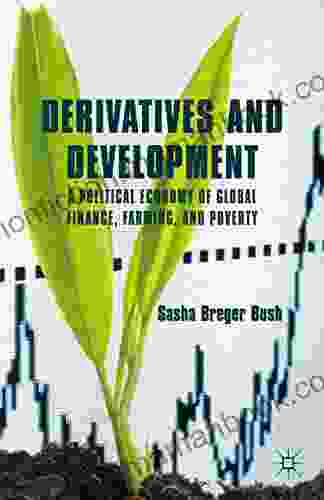
 Cole Powell
Cole PowellThe Political Economy of Global Finance, Farming and...
The global...
4.3 out of 5
| Language | : | English |
| File size | : | 1859 KB |
| Text-to-Speech | : | Enabled |
| Screen Reader | : | Supported |
| Enhanced typesetting | : | Enabled |
| Print length | : | 9 pages |


